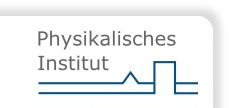Quantum state manipulation in natural and artificial spin systems
My research interests are in the field of nanoelectronic devices for quantum information processing: magnonics in the quantum regime, quantum emulation/simulation, and alternative qubit circuits and systems.
Research highlights include:
- Superconducting resonators and qubits
- Material science for quantum information devices
- Quantum control of artificial few-level atoms
- Alternative linear and non-linear elements for superconducting electronics (quantum and classic)
- Transport in tunnel and constriction junctions
- Superconducting spintronic
- Development of fabrication methods for nanoelectronic devices
Some recent results of our activities are listed below:
Quantum State Tomography on superconducting qubits
With a standard dispersive measurement, the state of a Qubit can only be projected onto the z-axis. To obtain the full density matrix and a point within the three dimensional Bloch sphere, multiple measurements with preceding manipulation pulses have to be done. Phase-controllable microwave pulses have to be realized as well as fast bias offset pulses for a fast detuning of the qubit and hence a rotation around the z-axis.


Gate-tunable superconducting qubits with semiconducting nanowire junctions
The goal of this project is to construct a superconducting qubit with a semiconducting nanowire as junction. In this case, the transition frequency can be tuned by the electric field of a gate electrode. Much like the field effect transistor. This concept could render the junction- or qubit- design more versatile in respect to fast electronics or quantum information processing. Our project is done jointly with colleagues from Research Centre Juelich.


Analog quantum simulation of light matter interation
We want to make use of a quantum supremacy in computation following the approach of analog quantum simulation. Here, a quantum problem that is typically hard to solve is mapped onto an artifiacially built quantum simulator, formed by a superconducting quantum circuit. By experimentally observing the dynamics of this quantum simulator, we can learn about the dynamics of the underlying quantum system of interest. In this project we focus on the quantum Rabi Hamiltonian in the ultra-strong coupling regime and its extension with a continuous set of harmonic modes, namely the spin boson model.


Quantum manipulation and sensing of spinwaves with superconducting qubits
Conventional spin dynamic measurement techniques require scattering methods and highly populated excitations of the spin waves (magnons). They are complemented and enhanced by coupling magnons to superconducting qubits being ideal detectors due to its quantum limited back-action on the measured object and single-quanta energy resolution. We explore fundamental aspects such as spin wave generation, detection, coherence, wave propagation or broadband flux noise in the quantum regime to open up new horizons for quantum spintronics and quantum computing.


Multi-qubit chains
A double chain of quantum bits with XX and ZZ couplings of neighboring qubits along and between the chains, respectively, can be mapped on a spin-full 1D Fermi-Hubbard model. The qubit system can thus be used to emulate the quantum properties of this model. We investigate its unit cell, two tunable concentric transmons and explore the fundamental aspects of their static and dynamic couplings.



